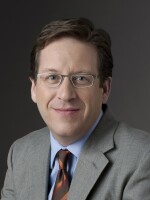ARUN RATH, HOST:
This is ALL THINGS CONSIDERED from NPR West. I'm Arun Rath. The mystery over the derailment of an Amtrak train near Philadelphia just took another twist. There are reports of objects hitting trains in the area just before the crash. Since the deadly derailment last Tuesday, much of the focus has been on the engineer and why the train increased speed to 106 miles per hour before entering a curve with a 50 mile per hour speed limit. NPR's Jeff Brady has the latest.
JEFF BRADY, BYLINE: The National Transportation Safety Board on Friday interviewed workers who were on that Amtrak train when it derailed. Robert Sumwalt with the NTSB says an assistant conductor reported hearing a radio transmission that a nearby regional train had been struck by something or shot at.
(SOUNDBITE OF ARCHIVED RECORDING)
ROBERT SUMWALT: She also believed that she heard her engineer say something about his train being struck by something.
BRADY: But Sumwalt says the Amtrak engineer told investigators he doesn't remember anything in the moments before the train derailed. Sumwalt says the assistant conductor reports that those radio transmissions came just before the accident.
(SOUNDBITE OF ARCHIVED RECORDING)
SUMWALT: Our investigation has not independently confirmed this information, but we have seen damage to the left-hand lower portion of the Amtrak windshield.
BRADY: Sumwalt says the FBI is examining the windshield damage. Meantime, passengers on a third train also report an object hitting their car in the same area just 15 or 20 minutes before the derailment. Doug Harris says he was on that train from New York to Washington.
DOUG HARRIS: I had headphones on. As we were approaching Philadelphia, I heard a loud thump. I looked up, and two rows in front of me and on the opposite side of the train, a passenger was pointing out his window, which now had a large crack in the glass that obviously hadn't been there before.
BRADY: Harris says Amtrak workers in Philadelphia examined the 8-to-10-inch circular crack and decided it was safe for the train to continue. He says no one saw what hit the window.
HARRIS: Just given the size of it and the thump, it just kind of instinctively felt like a rock to those of us around.
BRADY: All this new information has some in the neighborhood near the accident site speculating about what happened. Just a few blocks from where the train derailed, a truck passes by Sharon Achuff's house. Tuesday night, she says she was outside visiting with neighbors.
SHARON ACHUFF: That night that the train accident happened, we were sitting out on the step. And a light of blue come right across the wires - I mean (whistling) so fast.
BRADY: Her neighbor, Debbie Chappell, says at first, she thought it was lightning. But they soon realized something bad happened up on the train tracks. Chappell says that's when they saw a shadowy figure quickly leaving the scene.
DEBBIE CHAPPELL: Then we see this guy coming down on the opposite side of the street real fast - walking real fast. And we all said, he probably had something to do with it. I wonder what he did.
BRADY: Did you get a look at the man? Do you know what he looks like?
CHAPPELL: No. All I seen that he had black hair and a beard, and he went real fast.
BRADY: Could these be faulty memories of a chaotic moment or a potential lead for investigators? Philadelphia police spokeswoman Christine O'Brien tells NPR there are a lot of reasons someone might walk away from the scene. Still, she's forwarding the information to colleagues collecting reports about the derailment. If it is determined the accident was the result of a criminal act, the investigation would transfer from the NTSB to a law enforcement agency. So far, there's no announcement that has happened. Jeff Brady, NPR News, Philadelphia. Transcript provided by NPR, Copyright NPR.



